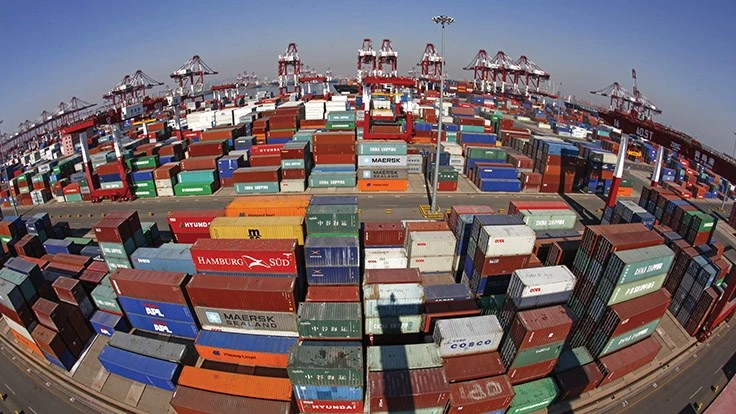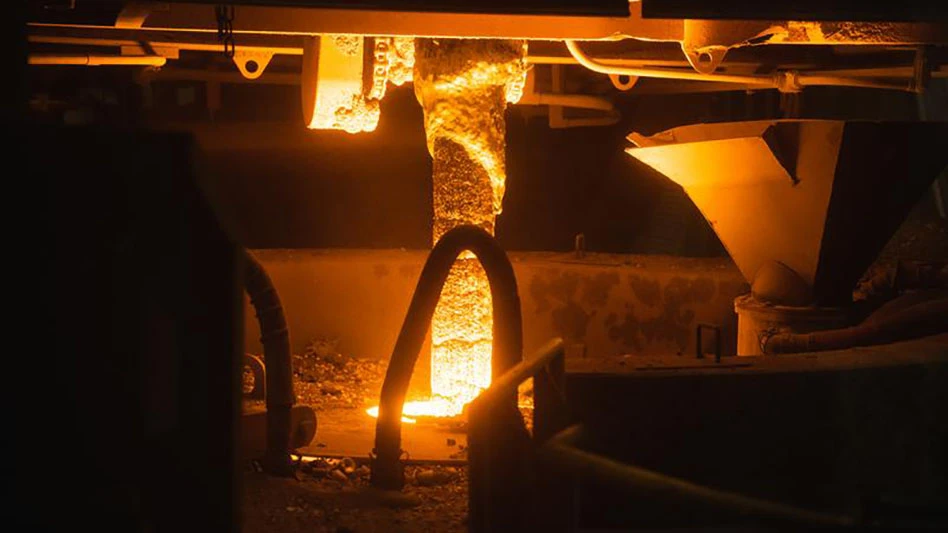
While news that China would ban certain scrap imports in 2018 disrupted the recycling industry last summer, U.S. global scrap exports increased overall in 2017, according to a new analysis from the Institute of Scrap Recycling Industries (ISRI), Washington. As improved demand for ferrous and nonferrous metal scrap more than offset weaker demand for nonmetallic scrap, total U.S. scrap exports advanced in 2017 in value and volume terms, the association says.
“Despite adversity in 2017, the recycling industry proved to be very resilient as it has shown to be so many times in the past,” says ISRI Chief Economist Joe Pickard. “Scrap is a valuable commodity used as feedstock in the manufacturing process in countries around the world. Its constant demand demonstrates the longstanding value and need in the global marketplace.
“However,” Pickard adds, “while overall exports fared better in 2017 and provide some ground for optimism, one need look no further than the plastics data to see the potential impacts of China’s import ban on other scrap commodities.”
According to recently released Census Bureau data, U.S. exports of all scrap commodities rose to 37.9 million tons, which was valued at $17.9 billion last year, an 8.6 percent increase in dollar terms, ISRI says.
China once again played an important role in U.S. scrap exports. An estimated 31 percent of U.S. exports, valued at more than $5.6 billion, were destined for mainland China in 2017, the association notes.
“China’s ban and change in regulations will continue to redirect global scrap flows,” Pickard says. “The implementation of reduced ‘carried waste’ thresholds starting March 1 remains squarely in focus for scrap recyclers despite numerous unanswered questions. Among those questions are: What exactly constitutes carried waste; whether 1 percent for nonferrous scrap and 0.5 percent threshold for all other scrap materials can be effectively (and consistently) implemented; and whether import license cuts will be geared mainly toward mixed metal shipments or for all nonferrous scrap commodities. Furthermore, the difference between scrap and waste remains a critical distinction in policy discussions moving forward.”
Although U.S. copper and copper alloy scrap exports to mainland China did trail off in the fourth quarter of 2017 (down 10 percent year on year), ISRI says, for 2017 as a whole, shipments to China increased nearly 4 percent. Overseas demand also improved in Hong Kong, Korea, Japan, Malaysia, Canada and Mexico last year, helping to boost U.S. copper scrap exports 6.2 percent in 2017 and above the 1-million-ton mark for the first time since 2014 according to the latest Census Bureau trade data.
Unlike the slowdown in fourth quarter copper scrap exports to mainland China, U.S. exports of aluminum scrap to China surged 32 percent higher year on year (as compared with the fourth quarter of 2016) to more than 230,000 metric tons during 2017, ISRI reports. As a result, aluminum scrap shipments to China jumped 18.5 percent higher for 2017 overall, helping to lift total U.S. aluminum scrap exports (including UBCs, used beverage cans and RSI, remelt scrap ingot) 15.8 percent higher to nearly 1.57 million metric tons. Other growth markets for aluminum scrap last year included Korea, Mexico, India, Hong Kong, Indonesia, and Germany, according to the Census data.
U.S. ferrous scrap exports (excluding stainless steel and alloy steel scrap) had their best annual performance since 2014, ISRI says, climbing 23 percent higher year on year by volume to 13.8 million metric tons. This material was valued at more than $4.1 billion in 2017. Improved demand from Turkey (up 16 percent), Vietnam (up 93 percent), China (up 60 percent), Pakistan (up 65 percent), Bangladesh (up 111 percent), Mexico (up 12 percent) and others contributed to last year’s gains.
Following China’s notification to the World Trade Organization in July that mixed/unsorted recovered paper imports into the country would be banned, recovered paper export prices (and mixed paper prices in particular) were pressured sharply lower. That reversed significant price gains earlier in the year, ISRI says. As a result, while the total volume of U.S. recovered paper exports dropped from 19.8 million metric tons in 2016 to just more than 18.3 million metric tons in 2017, the price strength in the first half of the year carried the dollar value of U.S. recovered paper and fiber exports 1.4 percent higher to more than $3.2 billion in 2017. This was in part because of stronger sales to India, Mexico, Canada, Indonesia and Vietnam, the association notes.
U.S. plastic scrap exports were hit hardest by the Chinese import restrictions announced last year. Plastic scrap export sales to mainland China and Hong Kong dropped 32 percent and 38 percent, respectively, in dollar terms in 2017, according to ISRI. As Chinese plastic scrap purchases plummeted, the total volume of U.S. plastic scrap exports fell 14 percent to 1.67 million metric tons, the lowest level since 2008. The decline in Chinese import demand for plastic scrap was especially dramatic late in the year, despite the regulations not yet coming into effect.
Additional data along with commodity-specific charts and tables are available on the ISRI website at www.isri.org/2017-trade-flows.
Latest from Recycling Today
- AF&PA releases 2023 paper recycling rate, unveils new methodology
- ARA names new president
- Aurubis invests in Lünen, Germany, site
- ILA, USMX negotiations break down
- Van Dyk hires plastics industry vet to expand footprint in PRF sector
- Li-Cycle closes $475M loan with DOE
- Report highlights consumer knowledge gaps in lithium battery recycling
- AMP names CEO





